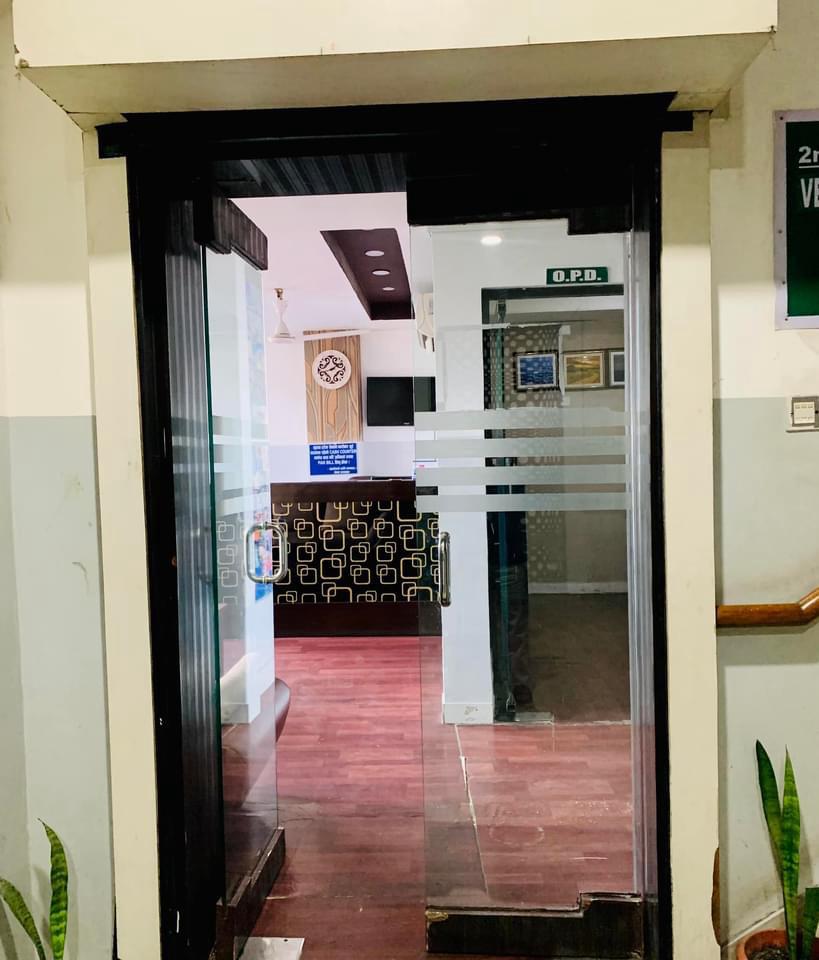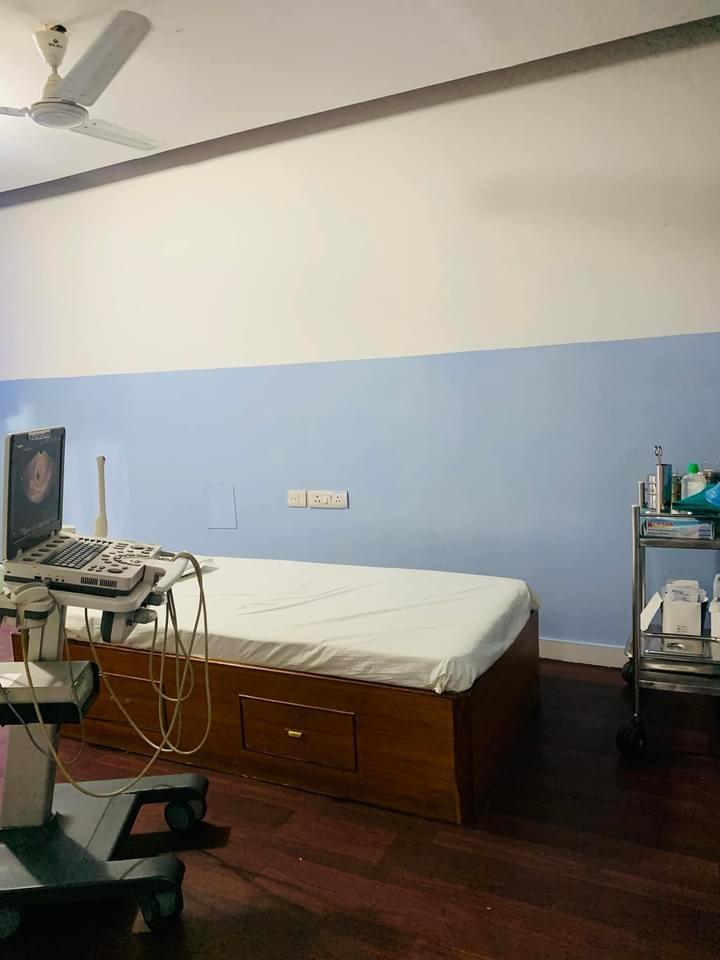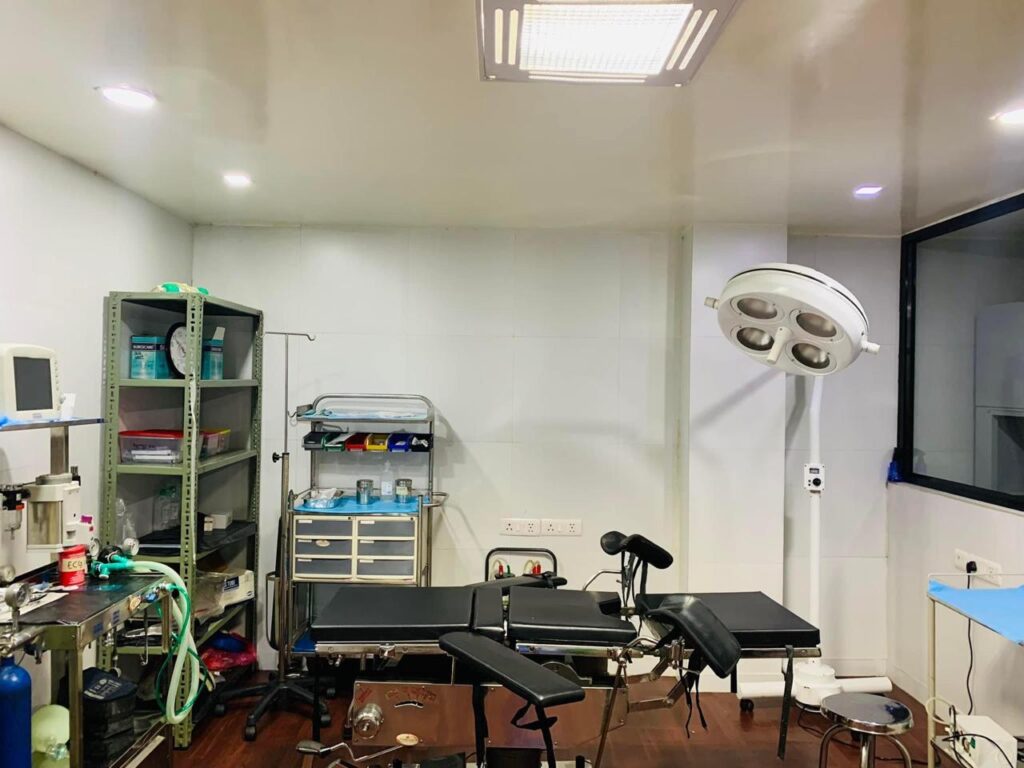Laparoscopy and Hysteroscopy
Investigating a woman’s internal pelvic anatomy can provide important new information about common gynaecological diseases and fertility problems. By direct visualization of the pelvic organs, laparoscopy and hysteroscopy can disclose conditions that are not visible by an exterior physical examination. Depending on the specifics of each case, these procedures may be recommended as part of the infertility treatment plan.
Hysteroscopy and laparoscopy are used for both operational (observation and treatment) and diagnostic (observation alone) purposes. To examine the ovaries, fallopian tubes, internal pelvic region, and the outside of the uterus, a diagnostic laparoscopy may be recommended.
Examination of the uterus cavity is possible with diagnostic hysteroscopy. Surgical laparoscopy or hysteroscopy can frequently be performed concurrently to address anomalies found during the diagnostic phase, hence minimizing the need for additional procedures. Surgeons skilled in these techniques should undertake both surgical and diagnostic operations. Patients will know what to expect before undergoing any of these treatments thanks to the upcoming details.

Diagnostic Laparoscopy
Many gynaecological conditions, including endometriosis, uterine fibroids, structural abnormalities, ovarian cysts, adhesions, and ectopic pregnancy, can be diagnosed by laparoscopy. During your assessment, your doctor may recommend this surgery if you have pain, a history of pelvic infections, or signs that point to pelvic diseases. After a preliminary fertility assessment of both partners, laparoscopy is sometimes advised. It is usually carried out soon after the menstrual cycle ends.
During a laparoscopy, which is often performed as an outpatient operation under general anaesthesia, a telescope is inserted via the navel. To provide space between the abdominal wall and internal organs and lessen the possibility of harming nearby tissues including the blood vessels, colon, and bladder, carbon dioxide gas is used to inflate the belly.
Depending on the patient’s medical history or the physician’s experience, different insertion sites might occasionally be used. These are usually little incisions, no more than an inch long. The uterus, fallopian tubes, and ovaries are among the reproductive organs that the doctor can visually evaluate with a laparoscope.
To realign the pelvic organs for improved view, a little device is usually placed through a different orifice in the lower abdomen. In addition, a solution is commonly injected into the uterus, fallopian tubes, and cervix to measure its patency. The openings are sewn shut with one or two stitches if no anomalies are found. But what started as a diagnostic laparoscopy could turn into a surgical operation if anomalies are found.
Operative Laparoscopy
Using the laparoscope, multiple abdominal problems can be safely diagnosed and treated at the same time using operational laparoscopy. Using two or more additional incisions, the doctor inserts additional equipment such as suture materials, probes, scissors, gripping devices, biopsy forceps, and electrosurgical or laser instruments during this process.
Although they have their uses, lasers are not always better than other surgical techniques used during operational laparoscopy. They are also expensive. The location of the problem, the physician’s preferences, and other considerations all play a role in the techniques and tools that are chosen.
Operative laparoscopy can be used to treat a variety of conditions, such as ovarian cyst removal, reopening blocked tubes, managing adhesions surrounding the ovaries and fallopian tubes, and treating ectopic pregnancies. Lesions related to endometriosis may also be removed or destroyed from the peritoneum, ovaries, or uterus. Uterine fibroids may also be removed in some cases.
Moreover, surgical laparoscopy can be used to remove damaged fallopian tubes and sick ovaries. Robotic-assisted laparoscopy is being used by an increasing number of surgeons for hysterectomies. But compared to regular surgery, this method is usually more expensive and time-consuming, and not all hospitals have the required tools. Furthermore, modifications to healthcare systems may affect the availability of robotic and other cutting-edge operations.
Laparoscopy Risks
Like every surgical treatment, there are dangers associated with laparoscopy. Skin irritation and bladder infections are common surgical consequences. Adhesions, or abdominal scar tissue, are possible, albeit less often than with open surgery (laparotomy).
Hematomas, or bruises filled with blood, can also develop close to incisions, as can infections in the abdomen or pelvis. Although substantial problems from diagnostic and surgical laparoscopy are uncommon, there is a chance of damage to the uterus, major blood vessels, colon, bladder, ureter, or other organs, which may require additional surgery. Treatment or the insertion of an instrument may result in injuries.
Severe problems can be made more likely by factors such as extreme thinness, severe endometriosis, pelvic infections, bowel/pelvic adhesions, obesity, and previous abdominal surgery, especially bowel surgery. It is rare to experience allergic reactions, nerve damage, or problems associated with anesthesia.
Urinary retention following surgery is uncommon, as is venous thrombosis (blood clot). Laparoscopy-related mortality is extremely rare—roughly 3 per 100,000. Approximately 1 or 2 out of every 100 women may encounter a complication, usually minor when all potential complications are taken into consideration.
Postoperative Care
Tenderness in the navel region, as well as bruises and soreness in the abdomen, are typical after laparoscopy. The shoulders, chest, and abdomen may all feel uncomfortable when the belly is inflated with gas. Anaesthesia may cause vertigo and nausea. The kind and scope of the operations vary in terms of how uncomfortable they are.
Normal activities can usually be resumed in a few days. However, you should get medical help right away if you have severe abdominal discomfort, worsening nausea and vomiting, a fever of 101°F or higher, pus draining from wounds, or considerable bleeding.
Diagnostic Hysteroscopy
When evaluating women who are experiencing irregular uterine bleeding, repeated miscarriages, or infertility, hysteroscopy is a useful treatment. Hysteroscopy is a diagnostic tool that provides a deeper look into the uterus. It can help detect abnormal uterine disorders such as fibroids that invade the cavity, scarring, polyps, and congenital defects.
Additional evaluations of the uterus, such as a hysterosalpingogram, pelvic ultrasound, sonohysterogram, or endometrial biopsy, may be performed before hysteroscopy. A cervical canal dilation is usually performed in the first stage of diagnostic hysteroscopy to momentarily widen the entrance. Then, a thin, lighted, telescope-like instrument called a hysteroscope is inserted into the uterus through the cervix.
Unlike other treatments, skin incisions are not required during hysteroscopy. After that, the uterus is made larger by injecting saline solution or carbon dioxide gas through the hysteroscope, which allows for a direct view of the interior structure of the uterus. To improve the assessment of the uterine cavity, diagnostic hysteroscopy is usually carried out in an operating room or doctor’s office on an outpatient basis, frequently soon after menstruation.
Operative Hysterectomy
Many of the abnormalities found by other imaging modalities or during diagnostic hysteroscopy can be addressed with operative hysteroscopy. With the addition of thin instruments sent into the uterus via a channel in the operating hysteroscope, this process is quite similar to diagnostic hysteroscopy. Within the uterus, fibroids, scar tissue, and polyps can be removed. The hysteroscope can also be used to rectify some anatomical abnormalities, like a uterine septum.
Medication may be prescribed by your doctor to get the uterus ready for surgery. A balloon catheter or another device may be introduced into the uterus after the procedure. In some situations, doctors may additionally administer estrogen and/or antibiotics to treat endometrial infections and encourage recovery. Although it is not recommended for women who are trying to conceive, endometrial ablation—a technique that aims to dissolve the uterine lining—may be used to treat heavy uterine bleeding.

Risks of Hysteroscopy
Hysteroscopy-related complications arise in about 2 out of every 100 surgeries. Uterine perforation, or a tiny tear in the uterus, is the most frequent complication, while it is still uncommon. Even while these perforations usually heal on their own, they can cause bleeding or harm to neighboring organs, which calls for additional care.
Adhesions or infections within the uterus may arise after a hysteroscopy. Although they are uncommon, serious side effects from the fluids used to dilate the uterus can include blood clotting, fluid excess, electrolyte imbalance, and severe allergic reactions. Although extremely rare, severe or life-threatening complications can prevent the surgery from being completed.

Postoperative Care
Patients may have vaginal discharge, bleeding, or cramps for a few days after hysteroscopy. With medical advice about the resumption of sexual activity, the majority of people can resume most physical activities in one or two days. If a balloon catheter is used, it is often taken out a few days later. To speed up recuperation after surgery, doctors may also administer estrogen and/or antibiotics.
Compared to traditional abdominal surgery, laparoscopy and hysteroscopy provide efficient methods of diagnosing and treating a variety of gynecologic problems on an outpatient basis with less recovery time. Patients should have in-depth conversations about any worries and related risks with their doctors before having these procedures done.
At Venus IVF, we offer expert fertility treatments for men and women, helping you achieve your dream family.
Contact Info
- +977 976-1682874
- +977 976-1682874
- info@venusivf.com
- Venus Hospital, Second floor- IVF department Mid baneshwor Kathmandu, Nepal
- 12-5 PM : Sunday to Friday (except Saturday)
